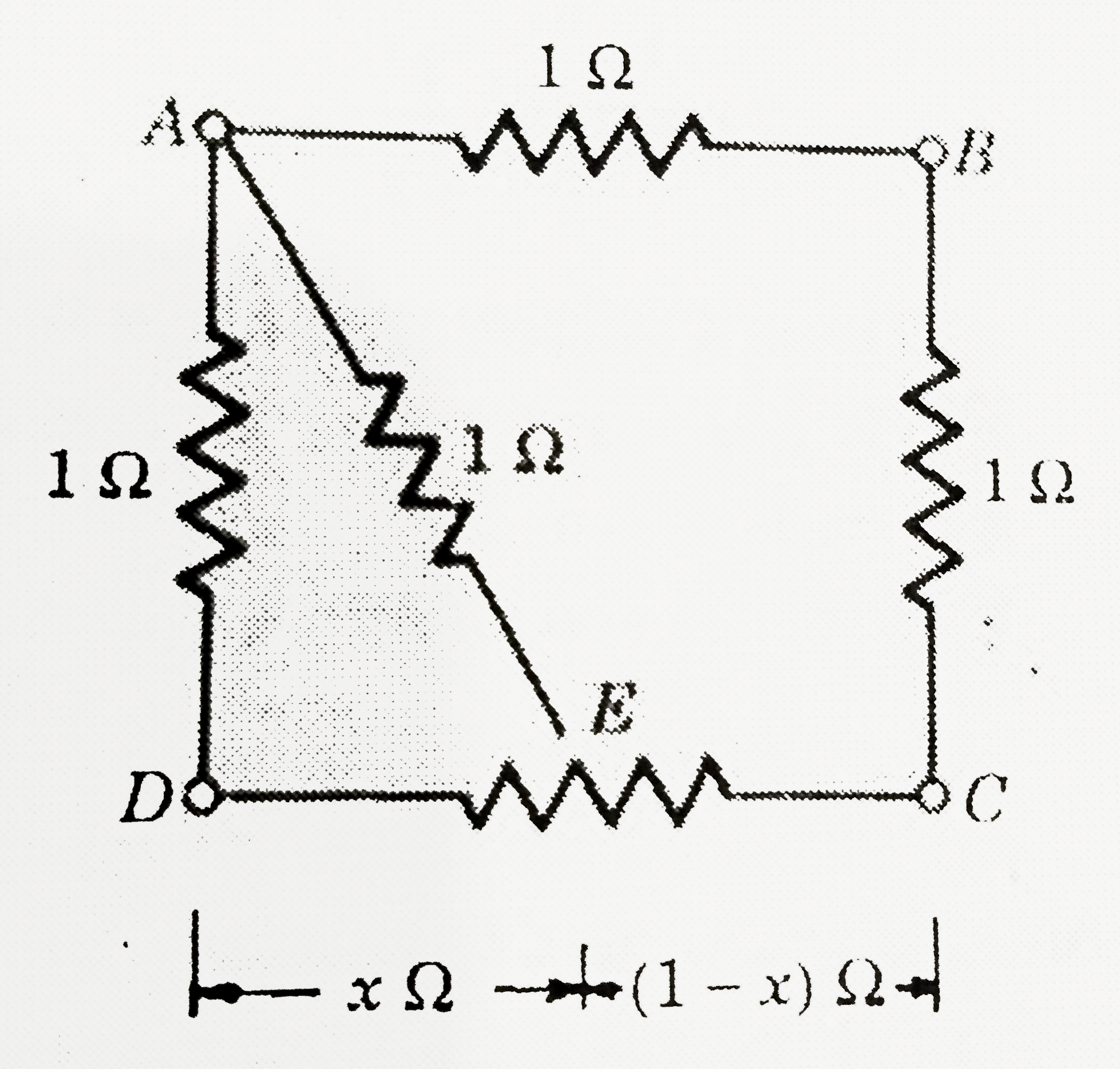ABCD is a square where each side is a uniform wire of resistance 1Ω. A point E lies on CD such that if a uniform wire of resistance 1Ω is connected across AE and constant potential difference is applied across A and C, then B and E are equipotential. Then,

CEED=1
CEED=2
CEED=1√2
CEED=√2
The correct Answer is:D
Step by step video & image solution for ABCD is a square where each side is a uniform wire of resistance 1Omega. A point E lies on CD such that if a uniform wire of resistance 1Omega is connected across AE and constant potential difference is applied across A and C, then B and E are equipotential. Then, by Physics experts to help you in doubts & scoring excellent marks in Class 12 exams.
Updated on:21/07/2023Topper's Solved these Questions
- CURRENT ELECTRICITYBOOK - MOTIONCHAPTER - CURRENT ELECTRICITYEXERCISE - EXERCISE -2 (Level-1) SECTION E- Electrical Power & Energy
8 Videos
- CURRENT ELECTRICITYBOOK - MOTIONCHAPTER - CURRENT ELECTRICITYEXERCISE - EXERCISE -2 (Level-1) SECTION -F Electrical Instrument + Exp. Verifying ohm s law & Specific Resistance Using Meter Brige & Post Office + Potentiometer (EMF & Int . Res.)
7 Videos
- CURRENT ELECTRICITYBOOK - MOTIONCHAPTER - CURRENT ELECTRICITYEXERCISE - EXERCISE -2 (Level-1) SECTION B- Resistance & resistivity , Ohms law +VI (Volt - Curr.) Characteristics +Colour Code +Temp . Dependence
11 Videos
- CONSTRAINED MOTION BOOK - MOTIONCHAPTER - CONSTRAINED MOTION EXERCISE - EXAMPLES
12 Videos
- ELASTICITYBOOK - MOTIONCHAPTER - ELASTICITYEXERCISE - EXERCISE -3
60 Videos
Similar Questions

In figure. ABCD is a square where side is a uniform wire of resistance 1Ω. Find the a point E on CD such that if a uniform wire of resistance 1Ω is connected across AE and a constant potential differene is applied across A and C the points B and E are equipotential.
View Solution
ABCD is a square where each side is a uniform wire of resistance 1Ω. Find a point E on CD such that if a uniform wire of resistance 1Ω is connected across AE and a constant potential is applied across A and C, the points B and E will be equipotential.
View Solution
Knowledge Check
A coil of wire of resistance 50Ω is embedded in a block of ice. If a potential difference of 210 V is applied across the coil, the amount of ice melted per second will be
A4.12gmB4.12kgC3.68kgD2.625gmA uniform wire of resistance 18Ω is bent in the form of a circle. The effective resistance across the points a and b is
 A3ΩB2ΩC2.5ΩD6Ω
A3ΩB2ΩC2.5ΩD6ΩA uniform wire of resistance 36Ω is bent in the form of a circle. The effective resistance across the points A and B is
 A5ΩB15ΩC7.2ΩD30Ω
A5ΩB15ΩC7.2ΩD30Ω
Find potential difference across the resistance 300 Ω in A and B.

View SolutionIf a wire of resistance 20Ω is covered with ice and a voltage of 210V is applied across the wire , then the rate of melting of ice is
View SolutionWhat will be the heat produced each second in a 4Ω resistance connected across a potential difference of 20V?
View SolutionWhat will be the heat produced each second in a 4Ω resistance connected across a potential difference of 20V?
View SolutionA uniform wire os resistance 12Ω is bent to form a circle. Effective resistance across two diametrically opposite points is
View Solution
